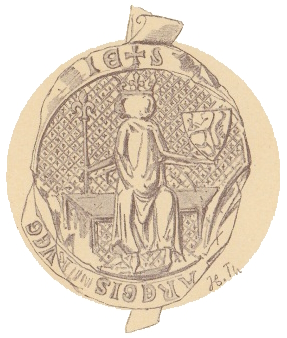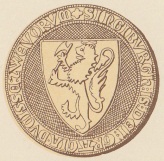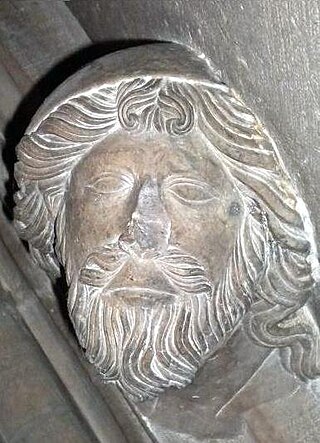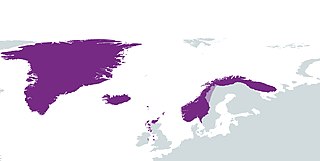Related Research Articles
Margaret, known as the Maid of Norway, was the queen-designate of Scotland from 1286 until her death. As she was never inaugurated, her status as monarch is uncertain and has been debated by historians.

Haakon VI, also known as Håkan Magnusson, was King of Norway from 1343 until his death and King of Sweden between 1362 and 1364. He is sometimes known as Haakon Magnusson the Younger to distinguish him from his great-grandfather, Haakon V.

Haakon V Magnusson was King of Norway from 1299 until 1319.

Eric Magnusson was the King of Norway from 1280 until 1299.

Birger Magnusson was King of Sweden from 1290 to 1318. His reign was marked by unrest and civil strife; he was imprisoned by his brothers Erik and Valdemar following the "Håtuna games" in 1306, but when he tried to play them the same trick in Nyköping, there was an uprising that ended with Birger losing the crown and the execution of his 18-year-old son Magnus.

Erik Magnusson was a Swedish duke and the second son of King Magnus Ladulås. His duchy consisted of large parts of Sweden, as well as smaller parts of Norway and Denmark. He had a troubled relationship with his brother, King Birger Magnusson, with several uprisings as a result. His son, Magnus, became the king of Norway and Sweden. The Erik's Chronicle, the oldest Swedish chronicle, is named for him.

Valdemar Magnusson was a Swedish prince, heir to the throne of Sweden, and the duke of Finland.

Ingeborg of Norway was a Norwegian princess and by marriage a Swedish royal duchess with a position in the regency governments in Norway (1319–1327) and Sweden (1319–1326) during the minority of her son, King Magnus Eriksson. In 1318–1319, she was Sweden's de facto ruler, and from 1319 until 1326, she was Sweden's first de jure female regent. Her role in northern European history is considered of major importance.
Isabel Bruce was Queen of Norway as the wife of King Eric II.
Rikissa Birgersdotter, also known as Rixa, Richeza, Richilda and Regitze, was Queen of Norway as the wife of the co-king Haakon Haakonson, and later Princess of Werle as wife of Henry I, Prince of Mecklenburg-Güstrow.
Ingeborg Eriksdotter was Queen of Norway and the wife of King Magnus VI. She was born a Danish princess, daughter of Eric IV of Denmark. As queen dowager, she played an important part in politics during the minority of her son King Eirik II of Norway in 1280-82.

Ingeborg, Duchess of Öland was a Norwegian princess and a Swedish duchess. She was Duchess of Uppland, Öland and Finland. As a widow, she had a seat in the regency government of her nephew Magnus, who reigned as king of both Sweden and Norway.

The House of Sverre was a royal house or dynasty which ruled, at various times in history, the Kingdom of Norway, hereunder the kingdom's realms, and the Kingdom of Scotland. The house was founded with King Sverre Sigurdsson. It provided the rulers of Norway from 1184 to 1319.
Events in the year 1319 in Norway.

Canute Porse the Elder or Knud/Knut Porse was a medieval Danish nobleman and Duke of Samsø, Duke of Halland, Duke of Estonia, and Count of Kalundborg.
Events in the year 1358 in Norway.
Events from the year 1312 in the Kingdom of Scotland.

The term Norwegian Realm and Old Kingdom of Norway refer to the Kingdom of Norway's peak of power at the 13th century after a long period of civil war before 1240. The kingdom was a loosely unified nation including the territory of modern-day Norway, modern-day Swedish territory of Jämtland, Herjedalen, Ranrike (Bohuslän) and Idre and Särna, as well as Norway's overseas possessions which had been settled by Norwegian seafarers for centuries before being annexed or incorporated into the kingdom as 'tax territories'. To the North, Norway also bordered extensive tax territories on the mainland. Norway, whose expansionism starts from the very foundation of the Kingdom in 872, reached the peak of its power in the years between 1240 and 1319.

Erik Valdemarsson the Elder was a Swedish prince and riksråd for Norway and Sweden. He was the son of King Valdemar of Sweden and Queen Sophia of Denmark. He is the progenitor of the Valdemarsgren branch of the House of Bjälbo. He married Ingeborg Knutsdotter (Aspenäsätten).
The Inter-Nordic conflict of 1302–1319 was a long-term conflict in Sweden, where Birger Magnusson and his brothers, dukes Valdemar and Eric, were the central figures. The conflict also involved the kingdoms of Denmark and Norway.
References
- ↑ "Haakon V Magnusson | king of Norway". Encyclopedia Britannica. Retrieved 29 March 2019.
- ↑ Bjørgo, Narve. "Eufemia". In Helle, Knut (ed.). Norsk biografisk leksikon (in Norwegian). Oslo: Kunnskapsforlaget. Retrieved 14 August 2012.